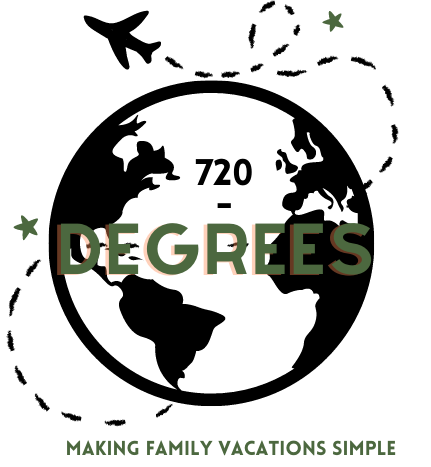When is the Best Time to Travel to Australia: A Guide to Seasons and Events
Traveling to Australia offers unique experiences throughout the year, making timing crucial for an enjoyable trip. The best time to visit largely depends on the activities she wants to pursue and the regions she plans to explore. Generally, the most favorable months for travel are from September to November and from March to May.
During these shoulder seasons, Australia enjoys mild weather and fewer crowds, ideal for outdoor adventures. Summer, spanning December to February, brings heat and larger tourist numbers, while winter, from June to August, can be chilly in certain areas. Each season presents distinct opportunities, so understanding these variations can enhance the overall experience. Exploring Australia at the right time can lead to memorable encounters, whether it’s witnessing the Great Barrier Reef in spring or enjoying the vibrant autumn colors in national parks. She should consider her preferences carefully to make the most of her journey down under.
Understanding Australia’s Climate
Australia’s climate is diverse, reflecting its vast size and varied geography. The country experiences distinct seasons and regional weather patterns that affect travel decisions.
Australia’s Seasons
Australia has four primary seasons, each bringing unique weather conditions.
- Summer (December to February): Temperatures can soar, especially in the northern regions, reaching up to 40 C (104 F). This season is ideal for beach activities but can be uncomfortable in hotter areas.
- Autumn (March to May): The temperatures begin to cool, averaging between 15 C (59 F) and 25 C (77 F). This period is known for beautiful foliage and milder weather, making it a popular time for visitors.
- Winter (June to August): Conditions vary; southern Australia can experience cold, rainy weather, while the north remains warm and dry. Temperatures may dip to around 0 C (32 F) in the south, suitable for skiing in mountainous regions.
- Spring (September to November): Temperatures start to rise again, ranging from 10 C (50 F) to 30 C (86 F). The season brings blooming flowers and is often seen as an ideal time to explore.
Regional Weather Variations
Australia’s weather is significantly influenced by geography, leading to various regional climates.
- Northern Australia: Experiences a tropical climate with a wet season (November to April) and a dry season (May to October). The wet season can bring heavy rainfall and humidity.
- Eastern Australia: Coastal areas have mild temperatures. Sydney has a temperate climate, with summer highs around 26 C (79 F) and winter lows of 8 C (46 F).
- Central Australia: Desert climate with extreme temperatures. Summer can exceed 40 C (104 F), while winter nights can drop to 3 C (37 F).
- Southern Australia: Typically cooler, with regions like Tasmania experiencing more precipitation. Summer temperatures are moderate, while winters can be quite chilly.
Travelers should consider these variations when planning their trips.
Peak Travel Seasons
Australia experiences specific peak travel seasons that cater to different preferences. Understanding these times can help travelers plan their trips to make the most of their experience.
Summer Holidays
The summer holidays in Australia run from mid-December to late January. This period coincides with school vacations, making it one of the busiest times for travel. Cities like Sydney and Melbourne see an influx of tourists eager to enjoy the warm weather, beaches, and outdoor festivals. Accommodation like the Tullah Lakeside Lodge will be a popular choice for many as it’s the perfect lakeside stay for warm weather.Visitors can expect to find popular attractions crowded. Accommodation prices may rise, and booking in advance is advisable. Events such as the Sydney New Year’s Eve fireworks and various music festivals are highlights during this time. It’s essential to consider the heat, especially in northern Australia, where temperatures can exceed 35 C (95 F). Beach activities and water sports are popular during this peak season, attracting both locals and tourists.
Winter Escapes
Winter in Australia spans from June to August, offering a quieter travel experience compared to summer. This season is particularly appealing for those interested in snow sports, especially in regions like the Snowy Mountains and Tasmania. Temperatures vary significantly across the country. For instance, northern areas like Cairns enjoy milder weather, while southern states can see snow and chilly conditions. Many travelers find winter a great time to explore cities without the summer crowds.
Unique events occur during winter, such as celebrations for the winter solstice and various arts festivals. Accommodations tend to be more affordable, and travelers can explore Australia’s natural beauty and cultural events without the heat and humidity typical of summer.
Off-Peak Travel Advantages
Traveling during off-peak seasons provides several benefits that can enhance the experience. Key advantages include lower costs and a more relaxed atmosphere due to fewer tourists, allowing for a more enjoyable trip.
Lower Prices
Traveling during off-peak periods can lead to significant savings on flights, accommodations, and activities. Airlines often reduce fares to fill seats during less busy times. For example, travelers might find airfare discounts of 20-40% compared to peak season. Accommodations also offer lower rates, with many hotels providing special offers or packages. This can make a substantial difference in total travel expenses. Vacation rentals may be priced significantly lower, giving visitors a chance to stay in better locations within their budget. Additionally, attractions such as theme parks, museums, or guided tours often reduce ticket prices during off-peak times. This makes it easier for travelers to enjoy more experiences without overspending.
Fewer Tourists
Visiting popular destinations during off-peak times allows for a more intimate experience. With fewer tourists, travelers can enjoy sites such as the Sydney Opera House or the Great Barrier Reef without long queues or crowded conditions. This enhances the enjoyment of these iconic locations. Moreover, travelers often benefit from more personalized service. Restaurants and tour operators are less rushed and can provide a higher level of attention. This can lead to discovering local insights or hidden gems that may be overlooked during busier seasons.
Nature lovers can also appreciate serene environments, particularly in national parks. Wildlife may be more visible, and hiking trails are less crowded, providing a peaceful experience in Australia’s stunning landscapes.
Events and Festivals
Australia hosts a variety of events and festivals that reflect its rich cultural diversity and sporting passion. Understanding these occasions can enhance the travel experience and provide insight into local traditions and activities.
Cultural Celebrations
Cultural festivals in Australia showcase its rich heritage and vibrant traditions. One of the most notable is Sydney’s Mardi Gras, held in February and March. It celebrates LGBTQ+ pride with a lively parade, performances, and parties, attracting visitors from around the world. Another significant event is the Vivid Sydney, an annual festival held in May and June. It combines light installations, music performances, and ideas, transforming the city into a vibrant spectacle. Celebrations such as Chinese New Year in various cities and the Woodford Folk Festival in Queensland also highlight the nation’s multicultural identity. These events offer opportunities to engage with art, music, and community.
Sports Events
Australia’s sports calendar is packed with major events that appeal to athletes and fans alike. The Australian Open, held in January, is one of the four Grand Slam tennis tournaments. It attracts top players globally and offers an exciting atmosphere for spectators. Rugby lovers can partake in the State of Origin, a fiercely contested rugby league series held between New South Wales and Queensland. This event occurs annually in June and July and captures the nation’s passion for sports. Additionally, the Melbourne Cup, known as “the race that stops a nation,” takes place on the first Tuesday of November and is a premier horse racing event that draws large crowds. These sporting events reflect the competitive spirit and camaraderie found in Australian culture.
Wildlife and Nature
Australia offers unique wildlife experiences and stunning natural landscapes throughout the year. For those interested in wildlife observation and exploration, timing the visit can enhance the experience significantly.
Whale Watching Season
The whale watching season in Australia typically runs from May to November. During this period, humpback whales migrate along the eastern and western coasts. Locations such as Hervey Bay, Sydney, and Fremantle provide excellent vantage points for observing these majestic creatures. Activities include boat tours that allow for up-close encounters. Many tours guarantee sightings, adding to their popularity. Travelers often also spot southern right whales, particularly off the coast of Victoria. Visitors should consider booking in advance, as spots fill quickly during peak months, especially from August to September.
National Parks and Reserves
Australia’s national parks and reserves showcase some of the planet’s most diverse ecosystems. Parks like Kakadu and Torres del Paine offer unique flora and fauna, making them prime locations for nature enthusiasts. Many parks have established walking trails and guided tours that highlight local wildlife. Visitors might encounter kangaroos, koalas, and various bird species. The best times to visit these parks generally align with the cooler months, from April to September. This period presents ideal conditions for hiking and wildlife photography. Travelers should pack accordingly to navigate different environments and weather conditions within each park.
Considerations for Your Travel Dates
When planning a trip to Australia, travelers should pay close attention to school and public holidays. These dates can significantly affect pricing, availability, and the overall experience.
School Holidays
School holidays vary by state and territory in Australia, typically occurring in January, April, July, and September. During these periods, families travel, leading to crowded attractions and higher accommodation costs. A table of school holiday dates can provide clarity:
| State/Territory | January Holidays | April Holidays | July Holidays | September Holidays |
| New South Wales | Jan 1-26 | Apr 13-28 | Jul 1-16 | Sep 28 – Oct 13 |
| Victoria | Jan 1-26 | Apr 13-28 | Jul 1-16 | Sep 21 – Oct 6 |
| Queensland | Jan 1-24 | Apr 1-14 | Jun 29 – Jul 14 | Sep 21 – Oct 6 |
Booking ahead during these periods is advisable, as accommodations may fill quickly.
Public Holidays
Australia observes numerous public holidays, which can impact travel plans. Major national holidays include Australia Day (January 26), ANZAC Day (April 25), and Christmas Day (December 25).
Local holidays also vary, often leading to festivities. For instance:
- Labour Day is celebrated on different dates in various states, influencing local travel patterns.
- Boxing Day (December 26) often sees significant sales and events, drawing crowds to shopping centers and attractions.
Travelers should account for these holidays when scheduling trips, as they may encounter busier than usual conditions and limited service availability. Careful planning can enhance the travel experience during both school and public holiday periods.
Planning Your Itinerary
When planning a trip to Australia, timing and activities are crucial. Understanding the seasons can help travelers make informed decisions.
Ideal Adventure Seasons:
- Spring (September to November): Great for outdoor activities and festivals.
- Summer (December to February): Best for beach visits but can be hot.
- Autumn (March to May): Ideal weather with fewer crowds.
- Winter (June to August): Perfect for skiing in the southern regions.
Key Considerations:
- Duration: A 2-3 week trip allows for a balanced exploration of cities and nature.
- Must-See Destinations:
- Sydney for its iconic harbor.
- Great Barrier Reef for marine adventures.
- Melbourne for culture and dining.
Sample Itinerary:
| Day | Location | Activities |
| Day 1-3 | Sydney | Harbor tour, visit Taronga Zoo |
| Day 4-6 | Cairns | Great Barrier Reef snorkeling |
| Day 7-9 | Melbourne | Explore street art and markets |
| Day 10-12 | Brisbane | Visit theme parks and beaches |
Flexibility is important, as weather can impact plans. Local events and holidays should also be considered. Adjusting the itinerary as needed ensures a fulfilling travel experience.
Health and Safety Tips
When traveling to Australia, health and safety should be a priority. Here are essential tips to keep in mind.
Vaccinations: Ensure that vaccinations are up to date. Common recommendations include those for measles, mumps, rubella (MMR), and tetanus.
Travel Insurance: It is wise to purchase travel insurance. This can cover unexpected medical expenses or trip cancellations.
Sun Protection: The Australian sun can be intense. Travelers should use sunscreen with at least SPF 30, wear hats, and seek shade during peak hours.
Hydration: Staying hydrated is crucial, especially in warmer areas. Carry a refillable water bottle and drink plenty of fluids.
Local Wildlife: Be aware of local wildlife. Know how to react to snakes, jellyfish, and other potentially dangerous animals.
Emergency Numbers: Familiarize yourself with emergency contact numbers. In Australia, dial 000 for police, fire, or ambulance services.
Health Facilities: Research local health services. Major cities have comprehensive facilities, but rural areas may offer limited options.
Food Safety: Practice food safety. Ensure food is cooked properly and sealed to avoid foodborne illnesses.
By following these health and safety tips, travelers can enjoy their experience in Australia with greater peace of mind.




Leave a Reply